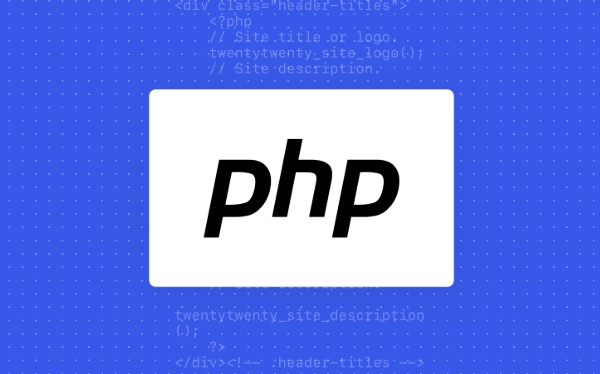The easiest way to convert an object to a PHP array is to use type conversion (array) $object. For stdClass objects, properties will be converted directly into array key-value pairs; but private or protected property names will be modified, such as \0MyClass\0name. For custom classes, you can manually map properties or use reflection to get common properties. Recursive conversion is required when processing nested objects to ensure that objects at all levels are converted. You can also consider built-in methods such as json_decode(json_encode($object), true) or framework tools such as Laravel's Arr::fromArrayable(). The choice depends on structural complexity and performance requirements.

When you need to convert an object into a PHP array, the most straightforward way is using type casting. Just do (array) $yourObject , and that's it. But there's more under the hood worth knowing, especially when dealing with different types of objects—like standard objects, custom classes, or even nested structures.

How basic casting works
Casting an object to an array in PHP is simple:

$array = (array) $object;
This works fine for stdClass objects created dynamically, like from JSON decoding. The object properties become keys in the array, and their values ??are preserved.
However, visibility matters. If your object comes from a class with private or protected properties, those will show up in the array but with mangled names. For example, a private property name in a class from MyClass will show as \0MyClass\0name . So if you're seeing weird keys in your array, that's probably why.

Handling custom classes
If you're working with a custom class, blind casting might not give you exactly what you want. That's because casting doesn't respect any magic methods like __toArray() or similar unless you explicitly write logic for them.
You have two options:
Manually map the properties:
$array = [ 'name' => $object->name, 'age' => $object->age, ];Or use reflection to extract all public properties:
$reflection = new ReflectionObject($object); $properties = $reflection->getProperties(ReflectionProperty::IS_PUBLIC); $array = []; foreach ($properties as $prop) { $array[$prop->getName()] = $prop->getValue($object); }
Reflection gives you more control, especially if you want to skip certain properties or handle specific types differently.
Dealing with nested objects
If your object has other objects inside (like a User object containing an Address object), casting alone won't fully flatten it. You'll end up with arrays containing objects still.
To avoid this, you need recursion:
function objectToArray($object) {
if (!is_object($object)) return $object;
$array = (array) $object;
foreach ($array as &$value) {
$value = objectToArray($value);
}
return $array;
}This function dives into every value and makes sure nested objects also get cast properly. It's especially useful when working with data like decoded JSON or ORM results.
When to consider built-in helpers
PHP has some built-in tools that can help too:
-
json_decode(json_encode($object), true)– this converts the object to JSON then back to an array. Works well for serializable objects, but may strip out resources or complex types. - Laravel's
Arr::fromArrayable()or Symfony's normalizers – if you're in a framework, these utilities often simplify things further.
Choose based on context. If performance matters or you know the structure is flat, stick with casting or recursion. If you're deep in a framework or need extra normalization steps, use the helper tools.
Basically that's it.
The above is the detailed content of how to cast an object to a php array. For more information, please follow other related articles on the PHP Chinese website!

Hot AI Tools

Undress AI Tool
Undress images for free

Undresser.AI Undress
AI-powered app for creating realistic nude photos

AI Clothes Remover
Online AI tool for removing clothes from photos.

Clothoff.io
AI clothes remover

Video Face Swap
Swap faces in any video effortlessly with our completely free AI face swap tool!

Hot Article

Hot Tools

Notepad++7.3.1
Easy-to-use and free code editor

SublimeText3 Chinese version
Chinese version, very easy to use

Zend Studio 13.0.1
Powerful PHP integrated development environment

Dreamweaver CS6
Visual web development tools

SublimeText3 Mac version
God-level code editing software (SublimeText3)
 PHP Variable Scope Explained
Jul 17, 2025 am 04:16 AM
PHP Variable Scope Explained
Jul 17, 2025 am 04:16 AM
Common problems and solutions for PHP variable scope include: 1. The global variable cannot be accessed within the function, and it needs to be passed in using the global keyword or parameter; 2. The static variable is declared with static, and it is only initialized once and the value is maintained between multiple calls; 3. Hyperglobal variables such as $_GET and $_POST can be used directly in any scope, but you need to pay attention to safe filtering; 4. Anonymous functions need to introduce parent scope variables through the use keyword, and when modifying external variables, you need to pass a reference. Mastering these rules can help avoid errors and improve code stability.
 How to handle File Uploads securely in PHP?
Jul 08, 2025 am 02:37 AM
How to handle File Uploads securely in PHP?
Jul 08, 2025 am 02:37 AM
To safely handle PHP file uploads, you need to verify the source and type, control the file name and path, set server restrictions, and process media files twice. 1. Verify the upload source to prevent CSRF through token and detect the real MIME type through finfo_file using whitelist control; 2. Rename the file to a random string and determine the extension to store it in a non-Web directory according to the detection type; 3. PHP configuration limits the upload size and temporary directory Nginx/Apache prohibits access to the upload directory; 4. The GD library resaves the pictures to clear potential malicious data.
 Commenting Out Code in PHP
Jul 18, 2025 am 04:57 AM
Commenting Out Code in PHP
Jul 18, 2025 am 04:57 AM
There are three common methods for PHP comment code: 1. Use // or # to block one line of code, and it is recommended to use //; 2. Use /.../ to wrap code blocks with multiple lines, which cannot be nested but can be crossed; 3. Combination skills comments such as using /if(){}/ to control logic blocks, or to improve efficiency with editor shortcut keys, you should pay attention to closing symbols and avoid nesting when using them.
 How Do Generators Work in PHP?
Jul 11, 2025 am 03:12 AM
How Do Generators Work in PHP?
Jul 11, 2025 am 03:12 AM
AgeneratorinPHPisamemory-efficientwaytoiterateoverlargedatasetsbyyieldingvaluesoneatatimeinsteadofreturningthemallatonce.1.Generatorsusetheyieldkeywordtoproducevaluesondemand,reducingmemoryusage.2.Theyareusefulforhandlingbigloops,readinglargefiles,or
 Tips for Writing PHP Comments
Jul 18, 2025 am 04:51 AM
Tips for Writing PHP Comments
Jul 18, 2025 am 04:51 AM
The key to writing PHP comments is to clarify the purpose and specifications. Comments should explain "why" rather than "what was done", avoiding redundancy or too simplicity. 1. Use a unified format, such as docblock (/*/) for class and method descriptions to improve readability and tool compatibility; 2. Emphasize the reasons behind the logic, such as why JS jumps need to be output manually; 3. Add an overview description before complex code, describe the process in steps, and help understand the overall idea; 4. Use TODO and FIXME rationally to mark to-do items and problems to facilitate subsequent tracking and collaboration. Good annotations can reduce communication costs and improve code maintenance efficiency.
 Quick PHP Installation Tutorial
Jul 18, 2025 am 04:52 AM
Quick PHP Installation Tutorial
Jul 18, 2025 am 04:52 AM
ToinstallPHPquickly,useXAMPPonWindowsorHomebrewonmacOS.1.OnWindows,downloadandinstallXAMPP,selectcomponents,startApache,andplacefilesinhtdocs.2.Alternatively,manuallyinstallPHPfromphp.netandsetupaserverlikeApache.3.OnmacOS,installHomebrew,thenrun'bre
 How to access a character in a string by index in PHP
Jul 12, 2025 am 03:15 AM
How to access a character in a string by index in PHP
Jul 12, 2025 am 03:15 AM
In PHP, you can use square brackets or curly braces to obtain string specific index characters, but square brackets are recommended; the index starts from 0, and the access outside the range returns a null value and cannot be assigned a value; mb_substr is required to handle multi-byte characters. For example: $str="hello";echo$str[0]; output h; and Chinese characters such as mb_substr($str,1,1) need to obtain the correct result; in actual applications, the length of the string should be checked before looping, dynamic strings need to be verified for validity, and multilingual projects recommend using multi-byte security functions uniformly.
 Learning PHP: A Beginner's Guide
Jul 18, 2025 am 04:54 AM
Learning PHP: A Beginner's Guide
Jul 18, 2025 am 04:54 AM
TolearnPHPeffectively,startbysettingupalocalserverenvironmentusingtoolslikeXAMPPandacodeeditorlikeVSCode.1)InstallXAMPPforApache,MySQL,andPHP.2)Useacodeeditorforsyntaxsupport.3)TestyoursetupwithasimplePHPfile.Next,learnPHPbasicsincludingvariables,ech






